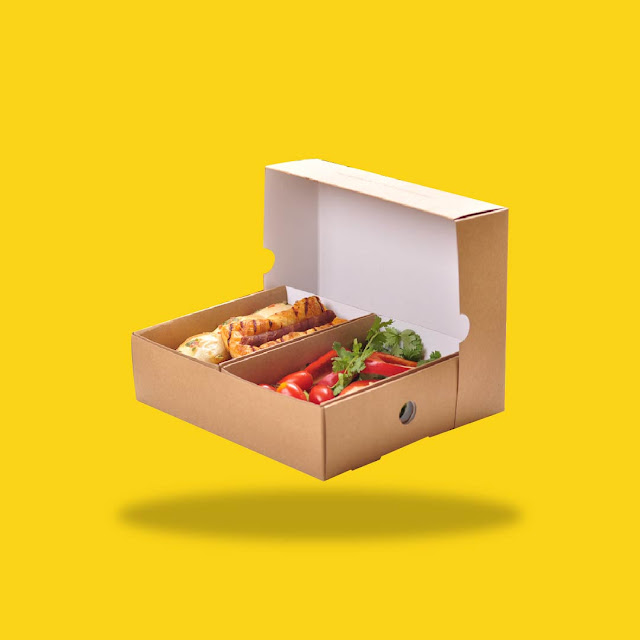Choosing Boxing Packaging and Containers for Food Products
First, let's Define What Containers and Packaging are?
Packaging, unlike containers, is intended only for one-time use,
to protect containers from external irritating factors (dust, dirt, water,
sunlight). Example: a box of lollipops wrapped in plastic wrap. The container
is a box, and the packaging is a film. That is, the container is used for storing
food, and the packaging is used for protection.
We figured out the definitions, now let's classify it all.
Classification of Containers and Packaging
It is divided into soft and hard. In soft packaging, the container is
compact, weighs little, allows you to hermetically pack the goods, and is quite
simple to manufacture. The most popular types of soft containers: are paper,
polymers, and fabric.
The main materials of soft containers:
- polymers (single-layer,
multilayer, heat-shrinkable, polypropylene, polyethylene, polyvinyl
chloride);
- paper, cardboard (craft);
- foil;
- combined materials.
What is the Difference Between Container and Kraft Packaging?
The container can be either completely transparent or opaque or
reflective. Packaging made of polymer films of bright colors is in great demand
among retail and wholesale product chains. It attracts attention, looks stylish, and at the same time protects the product from external harmful factors.
Rigid Packaging protects the product from deformation, mechanical stress, sunlight, moisture, and dust. It is made of sheet materials by extrusion, blowing, and pressing. Basic materials: cardboard, wood, tin, aluminum, polymers, glass, ceramics.
It is divided by types as follows:
- paper, kraft,
polyethylene, BOPP, HDPE, open and closed, antistatic
- trays and containers for
sealing, plastic, delivery, confectionery, fast food,
- Containers for cosmetics and medicine, cups for
sealing, bottles, and PET jars.
Packaging is divided
into the following types:
- BOPP and POF film (polyolefin),
for sealing trays, containers
- adhesive tape for clipping
machine, scotch tape;
- plate (sealing foil);
Also, containers and packaging are classified according to their
intended use for consumers and transport. Consumer - packaging of goods in their
primary form, in which the consumer will receive them. Transport - intended for
storage and transportation of goods in primary (consumer) packaging.
Scope of container and packaging
To make it easier to divide by areas of application, we summarize
containers and packaging by materials of manufacture: wood, ceramic, metal,
polymer, cardboard, paper, textile, combined.
Ceramic container: made of different types of clay, has a rigid
frame, does not transmit light, and is resistant to high temperatures. It is
mainly used for storing exclusive and expensive varieties of coffee (ground and
whole beans), and loose tea. Eco-friendly, food-safe.
Metallic Boxing
Metallic: it is highly durable, does not transmit ultraviolet rays, and protects the product from moisture, dirt, and harmful bacteria. It is used for the storage and transportation of semi-finished products, canned products, fish
products, and pates.
Cardboard and Paper Packaging Boxes
Cardboard and paper - they are lightweight, plastic, and
environmentally friendly. Such products require less time to manufacture, and their
cost is low. Usually, bags for dry mixes and groceries, tea, coffee, snacks, and cereals are made of cardboard and paper. It is often used in the manufacture of
grocery bags for customers.
Textile and Mesh Bags
Textile - mesh, bags. Easy to manufacture, inexpensive. In textile
containers, vegetables, fruits, flour, cereals, starch, sugar, and potatoes are
stored, transported, and sold.
Polymers: resistant to food acids and fats, sauces, water.
Protects the product from UV rays, microbes, dust, dirt, and mold. Safe for food
contact. Suitable for storing any food products, or drinks.
How to choose Cardboard Kraft Boxing Packaging?
Choose containers and packaging based on your field of activity and type of products. For example, Kraft Paper Boxes are great for packaging coffee and tea. Presentable appearance combined with good barrier properties allows them to be used in coffee shops, and specialized stores selling tea and coffee.
Plastic bags are suitable for storage, transportation, and sale of cereals, sugar, and snacks in retail and chain grocery stores, supermarkets, and hypermarkets. Glass containers are universal in use and are suitable for storing dairy products, juices, water, carbonated drinks.
ConclusionFor stores selling exclusive, expensive products, we recommend
containers made of natural materials: ceramics, wood, and fabric (linen, cotton,
jute). These can be coffee and tea boutiques supplying foreign products.
Metal containers (aluminum, tin) allow transporting the product
without the slightest damage. It can be culinary dishes, souvenir chocolate
figures, or sweets.




Comments
Post a Comment